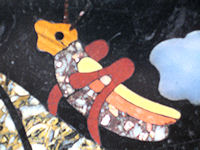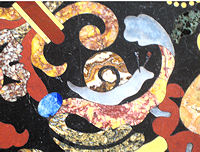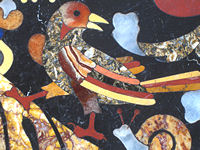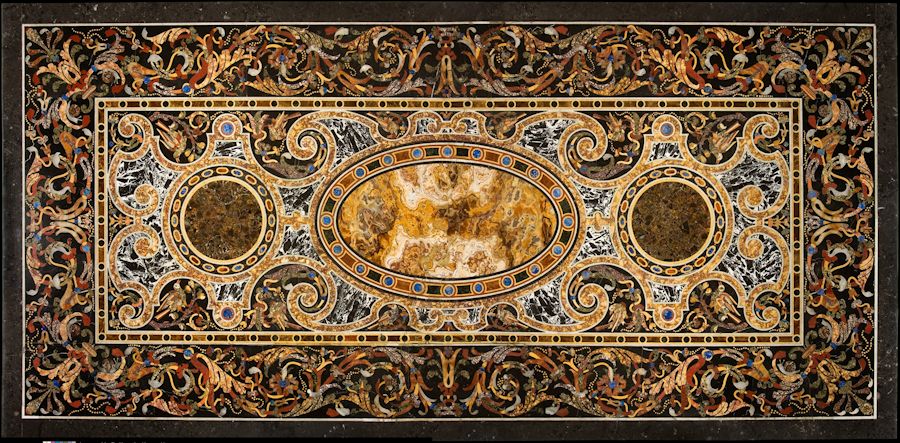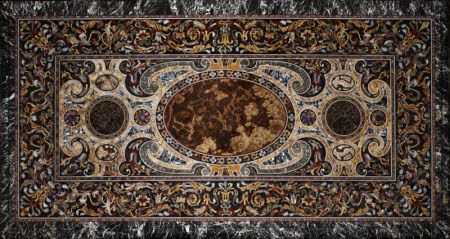Tour of the Property The Borghese Table
This table originally stood in the Borghese Palace in Rome in the 16th century. Who made the table and exactly when is not known. In 1803 Napoleon's youngest sister Maria Paola (Pauline) married Prince Camillo Borghese. Pauline had been a great trouble to Napoleon due to her scandalous behaviour and in 1804 shocked the world by posing nude for the sculptor Antonio Canova. His is a work of great beauty and can be seen in the Galleria Borghese in the Villa Borghese in Rome.
Through this family connection, Napoleon obtained the table and transported it over the Alps to Paris on a gun carriage as the Royal Navy had blockaded the ports. After the fall of Napoleon the table was acquired by the English collector William Beckford who frequently visited France seeking antiquities. Beckford placed it in the King Edward's Gallery at Fonthill. In 1823 George Lucy attended the Fonthill sale and acquired the table for 1800 guineas outbidding both King George the Fourth and the Marquis of Westminster. The table was transported from Wiltshire to Stratford by barge and to Charlecote by cart. The table was lot 446 on the fourteenth day of the sale and was described as A MAGNIFICENT TABLE OF PIETRE COMMESSE, the centre being an oval specimen of mammillated oriental onyx, surrounded by parterres of rare and beautiful jaspers and breccia, with broad border of bold arabesque, of various costly and uncommon marbles, belted with variegated marble. It is mounted on a superbly carved frame of oak, about nine feet long and four feet wide ...(this was not original but made for Beckford to support the slab and bears the Beckford cross). The mammillated onyx is claimed to be the largest in the world. Commesso (also known as Florentine mosaic or pietra dura) involves making patterns from stone in wafer-thin slices embedded in marble. Charlecote has many examples of this in tables, cabinets and boxes. The technique was developed in Florence in the sixteenth century so the Borghese table is contemporary with the building of Charlecote. Pietra dura signifies the hardness of the stones used, falling between the 6th and 10th degrees on the Mohs scale of hardness. The stones often contain organic materials and mineral oxides that can give a variety of patterns and colours within the stone. Examples of stones used in table construction are various jaspers, quartz, chalcedonies, agates and granite. The blue lapis lazuli seen in the table in the library is the only stone used to create pietra dura that falls outside this range of hardness.
Embedded in the detail you can find grasshoppers, snails and birds:
Note from Frank Storr I have been looking at the book entitled “Pietre Dure” by Annamaria Giusti, Chief Curator, Opificio delle Pietre Dure e Laboratori di Restauro in Florence.
The book is rather intellectual but from reading it I have deduced the following:-
The style of our table at Charlecote with its large central oval is typical of Roman manufacture. Designs were originally abstract and floral designs were incorporated later and later still, in the seventeenth century, birds, snails and grasshoppers etc. were added to the designs, which suggests the tabletop is seventeenth century. The large ovals were normally made from the hard calcite form of alabaster sometimes called alabaster-onyx, onyx-marble or just onyx but it is not true onyx.
The master craftsman would employ an artist to paint the 1:1 design in watercolour on paper or oil on canvas. The design would then be traced (the tracing called a cartoon) and transferred to the stone to be shaped. The painted design would be as close in colour to the stone as possible. The cartoons need not have been used for a single tabletop and it is possible that several pieces were constructed using the same design.
I now quote a paragraph from the book:-
Three great ‘sister’ tables correspond to this typology (incorporating birds, snails etc), in the Palazzo Ducale at Mantua, the Metropolitan Museum of New York and at Charlecote Park (Wiltshire, sic) ; the latter coming from the Borghese collection in Rome and all probably derived, with few variations from a single cartoon according to a practice that was usual in Roman workshops.
Note that there is no mention of the Powis table but it would have been made from the same cartoon. Colours in all the mentioned tables would vary according to the availability of stones. Apparently many of the stones used in Rome were plundered from mosaics etc made from stones obtained from the ‘four corners’ of the Roman Empire and therefore there was a ready though diminishing supply.
I trust these observations from the book are helpful
Frank Storr note from Derek Tilford I found your investigations into the Borghese Table interesting. I hadn't delved into the pietre dure technique so much - having studied geology at university, stones have always fascinated me, their origin and their usage. .Also living in the Hunsruck mountains in Central Germany for a while , the centre of the German diamond and precious stones, cutting and polishing industry, onyx was the stone that was the speciality of the nearest village to where we lived. I have seen it being cut and polished as it was in the middle ages, and today with more modern techniques. The local speciality was placing pieces of onyx in speciality rings, called 'Tigre Augen' - tiger eyes The information on the dating of the table ties in with my discoveries, although I would put it at early seventeenth century rather than late for the following. Visiting the Prado Museum in Madrid - this being essentially an art museum, I was fascinated to see two examples of pietre dure tables in one of the galeries. They were not as big as the Borghese table, being about 3ft square. What was interesting though was that one was with a white marble base with inlays, the second was a black marble base with inlays.Sadly one was not allowed to get really close to the tables to carry out a minute inspection. The white based table was particularly interesting as it featured bird inlays which were so similar to those in the Borghese table that I felt the same craftsmen could have worked on both tables. With the use of cartoons as described in the article you found, this possible origin from a common source seems even more possible. What was particularly pertinent was the information given about this white based table in that it was described as being listed in an inventory at the Arsenal at Segovia in 1620. The distance from Florence to Segovia at that time was more than a few days! What would be interesting, if could be obtained, would be a date when the Borghese table copy was received/purchased by the family at Powis Castle. The second table in the Prado Museum, the black marble based example had some similarities to the second pietre dure table at Charlecote, the table in the Library bay window. However in this case the similarities in the more extensive use of Lapis Lazuli was interesting but not so striking as those birds inlaid in the white based table in the museum and our Borghese table. Incidentally, for the purists, Lapis lazuli should not be used in pietre dure articles as by definition all of the materials used should be 'hard' as defined by the Mohs's scale of hardness. Lapis is ony semi-hard (hardness range 5 - 5.5).but it's obviously introduced for its colour. Thanks for sharing your researches. Yours aye, Derek Notes from Richard Colley I have been able to obtain a good quality image of the Pietre Dure table from the Ducal Palace in Mantua, to compare all the 3 great ‘sister' tables as listed in the book entitled “Pietre Dure” by Annamaria Giusti, Chief Curator, Opificio delle Pietre Dure e Laboratori di Restauro in Florence
It is interesting that the Mantua table in the Ducal Palace has a wooden rather than marble edge.
Video of the making of pietra dura a further page from Frank Storr
return to Hall page Return
to index page
|

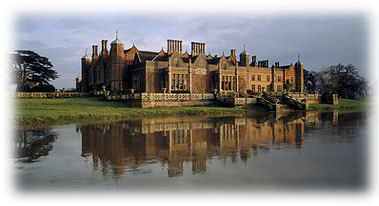
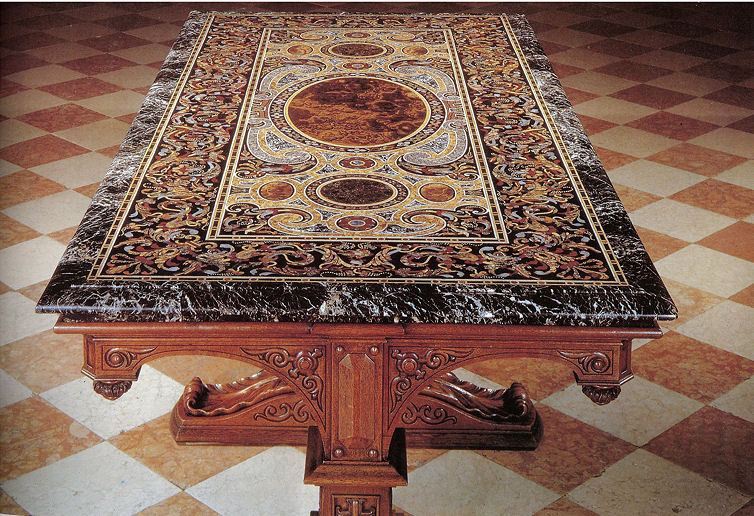
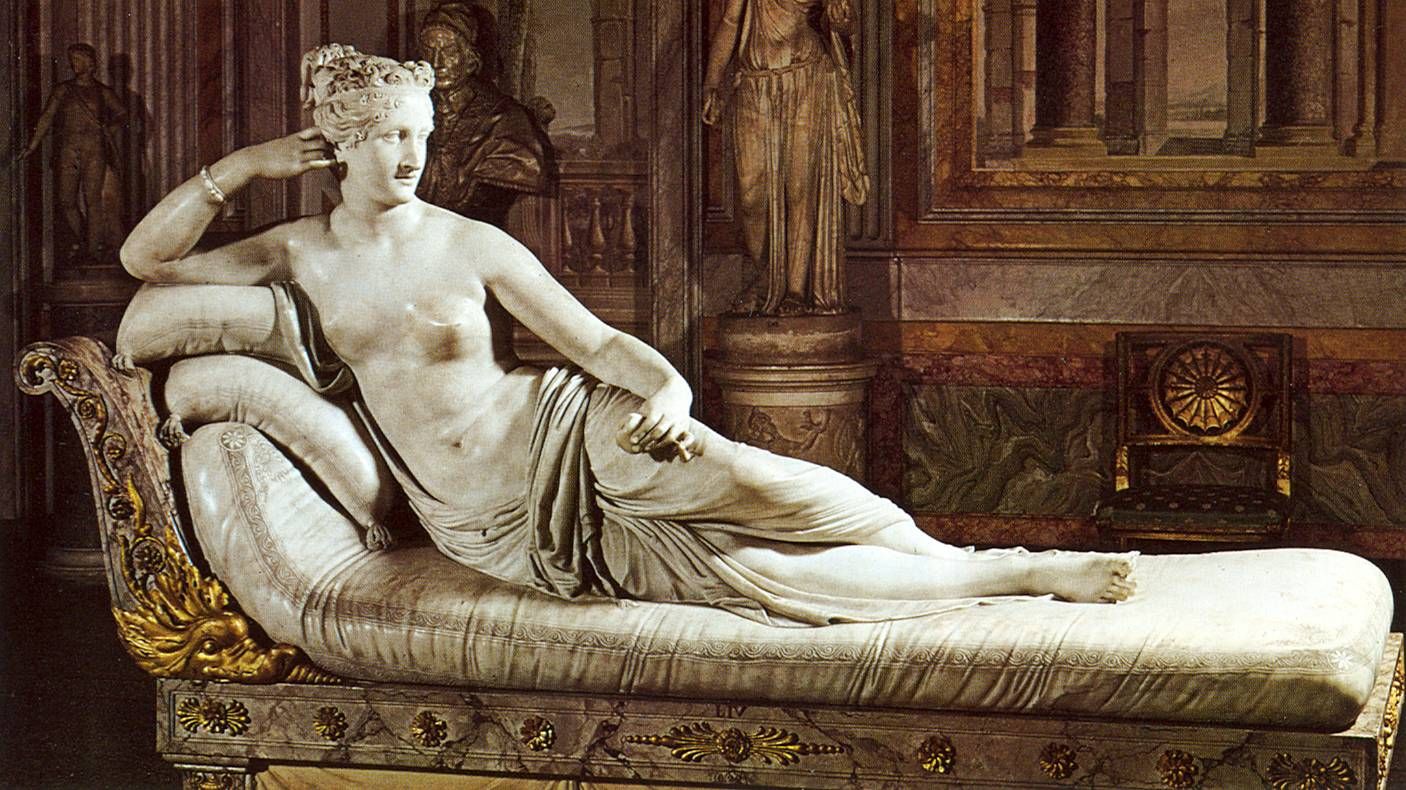
.jpg)
.jpg)
